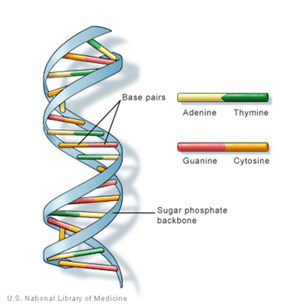


Joseph R. Anticaglia. MD
Medical Advisory Board
Jennifer Doudna and Emmanuelle Charpentier have ignited a scientific revolution. In 2020, both shared the Nobel Prize in chemistry for their pioneering work in gene editing (also called genome editing or genetic engineering). This innovative technology, CRISPR-Cas9, allows scientists to more easily and accurately repair or enhance an organism’s faulty DNA.
Scientific interest has intensified on ways to correct flaws in DNA Deoxyribonucleic acid contains the biological instructions for making all of the body’s proteins. DNA transmits hereditary instructions from parents to offspring. It’s our unique genetic code. Unfortunately, at times, our bodies get the wrong instructions and genetic diseases are the results.
Gale is 15 year old African American diagnosed with Sickle cell disease diagnosed when she was ab infant. Over the years she has experienced painful crises which caused her to be admitted to the hospital for treatment. Gayle and her mother all too often have heard their doctor say, “I’m very sorry, we don’t have a cure for this diseases at this time.”
Sickle cell disease is a hereditary blood disorder that has mystified scientists and clinicians for decades Individuals have a family history of this DNA disease which has its onset in the first year of life. The anemia, with its painful symptoms and other complications continues throughout the rest of their lives With CRISPR-Cas9 technology, there’s good reason to be optimistic about a cure for this disease in the near future.

DNA, (deoxyribonucleic acid) contains the biological instructions for making all of the body’s proteins. It’s our unique genetic code.
Some have compared DNA to a cookbook filled with instructions. In the biological world, if there’s a mistake in the DNA’s instructional manual (mutation) or in the orderly sequence of steps to make healthy proteins, genetic defects can be in the offspring. Under these instances, CRISPR-Cas9 can enter into the picture with the potential to correct genetic flaws in an organism’s DNA and cure diseases.
The CRISPR method of gene editing is not new. What’s new is how researchers adapted the CRISPR-Cas9 system. Scientists have studied the CRISPR system in the bacteria E. coli. They discovered that bacteria protect themselves by removing pieces of the viruses’ DNA. Bacteria use a one — two punch to inactivate invading viruses. First, they switch on a surveillance system, called guide RNA, to locate the invading viruses. Next, they use the enzyme Cas9 to chop pieces the viruses’ DNA to disable them. They also kept a record of the invading viruses in a memory bank.
In an effort to get a better picture of CRISPR, Dr. Jennifer Doudna put it this way. Consider CRISPR-Cas9 as being “analogous to word processing. Think of DNA code (instructions) like the text of the document. CRISPR-Cas9 is the scissors that allow you to cut out the text or change it” when writing a document in word. Think of it as cut and paste.
Other methods of gene editing have been used by scientists to change an organism’s DNA. However the methodology of the Nobel Prize winners has proven to be more reliable, faster and cheaper. This technology allows “gene surgeons” to make precise cuts at the site of repair.
There are two main components of the CRISPR-Cas9 system:
Cas9 is a protein that can cut and degrade an unwanted section or sequence of DNA in a specific way and at a specific site.
Guide RNA recognizes and pinpoints the sequence or sections of DNA to be edited. Guide RNA becomes attached (bound) to Cas9 and together they navigate toward the targeted DNA in the cell. Cas9 is a protein and its job is to cut — cleave the unwanted sequence of DNA and assist in its repair and removal.

Scientists have a few options when using CRISPR-Cas9:
CRISPR-Cas9 differs from other gene editing techniques because it gives “gene surgeons” the power to introduce or remove more than one gene at a time These “surgeons” have the capability to manipulate an organ’s DNA more reliably, more cheaply and more quickly reducing the procedure time from years to weeks.
The potential applications of the CRISPR-Cas9 system are huge Scientists are investigating ways not only to cure genetic disease, but use techniques to cure cancer, ways to manufacture chemicals and how to improve food crop production. The potential benefits of CRISPR seem to be limitless.
The misapplication of this technology is also huge. Miniscule changes to DNA could have countless, unforeseeable, permanent, long-term consequences. The possibility of creating “better babies” is of international concern as well as the unintended consequences of engineering inferior babies shackled with cancer and congenital defects. Dr. Doudna has asked the scientific community to pause and discuss the ethical and social implications of this new technology. It could open Pandora’s box.
This article is intended solely as a learning experience. Please consult your physician for diagnostic and treatment options.